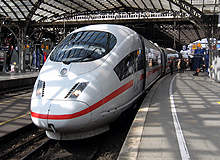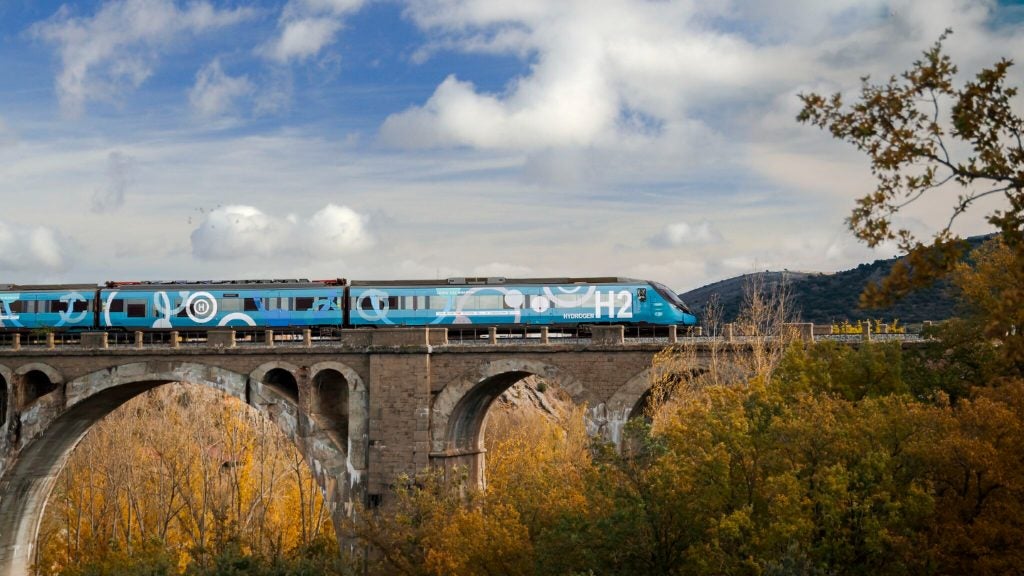
For the first 200 years, Europe’s railways developed as national systems, often state-owned they were designed to move people and goods around the country. Interoperability was rarely considered, and when it was it was often opposed by governments with no wish to make the logistics of invasion easier. Following the establishment of the ‘common market’ and then the EU, those tensions have receded and intra-European trade and travel has boomed.
In 2007 there were 100 million rail passenger journeys across internal EU borders, an increase of 27% since 2001. 85% of this traffic is between the 15 ‘old members’, and is dominated by high-speed traffic between France and its neighbours and between Denmark and Sweden.
Freight traffic has also increased dramatically in some regions such as around the Balkans and into Turkey where freight traffic increased by over 600% in the same period, but less so elsewhere, the average increase being around 7% according to figures from the NEA report “Situation and Perspectives of the Rail Market” for the European Commission, published March 2010.
The EU Commission and member states are keen to encourage this growth not least because increased rail passenger journeys tend to be at the expense of air travel, subsequently lowering carbon emissions. Rail freight is also good for economic growth and helps reduce truck movements and the resulting congestion and emissions.
Several EU initiatives, some of them quite long standing, are now coming together to facilitate intra-European rail. The first EU directive on the interoperability of the trans-European high-speed rail system goes back as far as 1996. A similar directive from 2001 deals with conventional lines. In order to achieve the objectives set out in the directives technical specifications for interoperability (TSIs) were drawn up AEIF (Association Européenne pour l’Interopérabilité Ferroviaire, or European Association for Railway Interoperability) bringing together representatives of the infrastructure managers, railway companies and industry.
See Also:
In addition to cross-border traffic, TSIs encourage competition between rolling stock manufacturers making it easier for train operators to purchase across borders.
How well do you really know your competitors?
Access the most comprehensive Company Profiles on the market, powered by GlobalData. Save hours of research. Gain competitive edge.

Thank you!
Your download email will arrive shortly
Not ready to buy yet? Download a free sample
We are confident about the unique quality of our Company Profiles. However, we want you to make the most beneficial decision for your business, so we offer a free sample that you can download by submitting the below form
By GlobalDataERTMS
The European rail traffic management system (ERTMS), one of the results of the TSI process, is a cab-based signalling and train control system consisting of two primary components; ETCS (European train control and command system); and GSM-R (the radio communications system to send information to the train). By being the first of its type ERTMS has become almost a global standard with deployment on four continents.
Application is patchy though and limited to new lines, usually high-speed and to major upgrades. In the UK for example ERTMS is being deployed on the 217km Cambrian Coast upgrade, but nowhere else at present. The UK’s national implementation plan aims to cover 72% of the UK national network by 2038. Similar development across the EU will make it feasible for passenger trains to operate across borders – but it will probably by 30 years before ERTMS is really widespread across the EU.
REORIENT
In 2001, a European Commission (EC) white paper, ‘European Transport Policy for 2010: Time to Decide’ aimed to revitalise the railways, and attract more freight transport to rail. Following up on the white paper, the Council of Ministers and the European Parliament approved two packages of legislation in 2001 and 2004 that included several directives imposing a new regulatory framework for railways.
In January 2005, the EC initiated a project named REORIENT one of whose objectives was to evaluate the progress and effects of the two packages. They reported in 2007.
REORIENT set out to analyse progress on interoperability across 11 countries from Greece to Scandinavia. The report is detailed and complex but found that whilst most countries have put in place the legal and institutional frameworks and operate reasonably good border crossings and transfer points, none score well on technical interoperability according to the TSIs.
UNIFE
Rail industry body Unife took a look at cross-border freight traffic and ERTMS in a report published in September 2010. The data released by UNIFE shows that whilst the European ERTMS deployment plan foresees the gradual installation of ERTMS along six corridors in 2015 and 2020, only a few freight lines have been equipped so far.
The situation contrasts with that on high-speed lines, which are successfully running with ERTMS in countries like Spain, Italy or Belgium. The installation of ERTMS only brings its full benefits if investments are well-coordinated and implemented along an international freight route. UNIFE backs the EU-coordinated approach contained in the European Deployment Plan, and urges the Member States to support the deadlines contained in this plan.
XRail
There is good news in the freight market though, in February this year seven leading European rail freight operators created the XRail alliance. XRail’s goal is to render international wagon load traffic by rail more customer-friendly and efficient.
The alliance is made up of seven partners:
- CD Cargo (Czech Republic)
- CFL cargo (Luxembourg)
- DB Schenker Rail (Germany, Netherlands, Denmark)
- Green Cargo (Sweden, Norway)
- Rail Cargo Austria (Austria, Hungary)
- SBB Cargo (Switzerland)
- SNCB Logistics (Belgium)
It is hoped to expand the group as market conditions and technical compatibility permits.
XRail notes that half of all rail freight traffic in Europe is in wagon loads (rather than train loads) and believes there is significant room for growth. XRail was initiated in 2007 under the leadership of the International Union of Railways (UIC) in Paris and carried out pilot operations before announcing the service formally.
The XRail system provides customers with a transparent delivery service from point to point, similar to the international service offered by companies such as DHL. It provides a standardised quote system and international timetables with an active information system. It should be good for the rail companies too. It is estimated that fixed costs make up 90% of the costs of wagon load operations and for the most part they are not profitable. XRail’s aim is to increase the traffic without significantly raising costs so wagon load operations start to make a profit.







